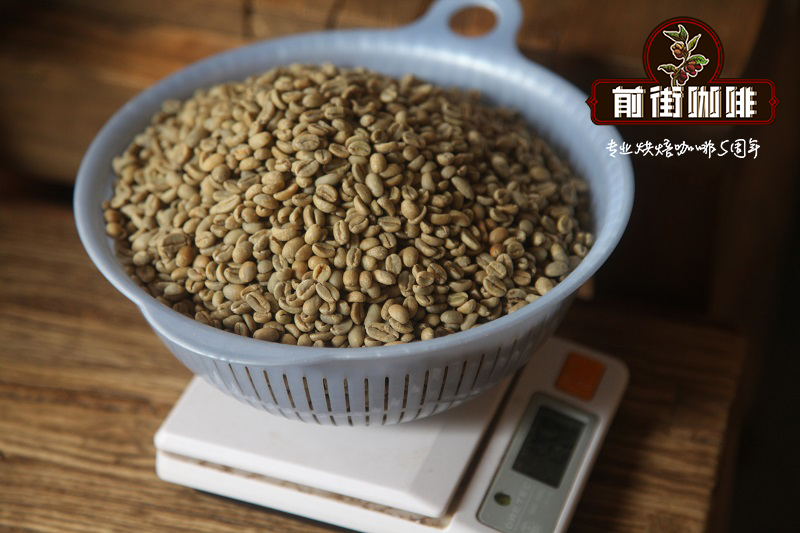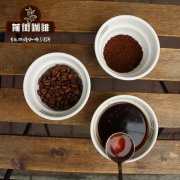The higher the altitude, the better the quality of coffee beans? what factors determine the hardness of coffee beans?

Pick up any bag of hand-roasted specialty coffee and look at the label. You'll notice that it tells you something: country and region of origin, taste description of the coffee bean, perhaps the name of the farm or roaster…and, if it's a single origin, usually its name. Altitude, measured in metres above sea level (masl).
But what does that actually mean? As coffee lovers, consumers, or even coffee buyers or roasters, why should we care?
Well, if you ask baristas, they'll probably tell you that coffee at higher altitudes is of higher quality-but in reality, it's much more complicated. Let's look at what altitude really means.
Altitude: A Symbol of Coffee Quality?
Higher altitudes are associated with sweeter, more complex coffee flavors, but this is actually a correlation rather than a causal relationship. The real reason for better, tastier coffee is temperature.
At lower temperatures, coffee trees grow more slowly. Cherries that contain seeds that we roast and call coffee beans also ripen. This means they have more time to develop complex coffee flavors.
There is a downside to this: coffee trees produce less fruit, require more care, and are harvested later in the year. Coffee should not be grown in climates that are too warm, but neither should it be grown in climates that are too cold.
But generally, coffee grown at lower temperatures tastes better.
More reasons for lower temperatures
At these lower temperatures, certain pests and diseases are also difficult to reproduce. Fungi that take away coffee rust, this fungus eats away at the leaves of coffee plants, preventing them from photosynthesis and getting the energy they need for healthy growth. In 2012, it destroyed coffee communities in Latin America, generating more than $1 billion in revenue in just two years (USAID). But, as SCA science manager Emma Sage points out, leaf rust is not without its own vulnerabilities, one of which is temperature.
Sage wrote in a 2012 SCAA blog post that the optimal temperature for coffee leaf rust is 21 - 25°C / 70 - 77°F, while the disease cannot survive below 15°C / 59°F. The ideal temperature for growing coffee is 17 - 23°C / 63 - 73°F, while growth is less efficient at 14 - 30°C / 57 - 86°F. This means that at lower temperatures, the rust of coffee beans should be weaker.
Similarly, a 2009 study showed that at temperatures of 20 - 30°C / 68 - 86°F, coffee fruit borers caused hundreds of millions of dollars in damage and thrived.
Coffee farms outside this range (which usually means higher altitude) are less likely to be affected by coffee leaf rust, coffee fruit borers or any other pest that struggles to survive in colder climates. In the final cup, this reduces defects altogether, thereby reducing unpleasant taste.
Not all coffee varieties rust easily. However, those that are sometimes not can sometimes be less than ideal. That's because they usually have a Robusta parent, a firm but bitter coffee. The lower pest risk also encourages some producers to plant higher quality but less resistant varieties (you may find another variety on the coffee bag label).
Want to know more? Read various coffee crash courses
But explaining all this complexity takes time and a patient audience. For all these reasons, when asked why altitude matters, we tend to simplify things and just say that the higher it is, the better the coffee.
But sometimes, that's not true.
a place of insufficient altitude.
Just as altitude affects temperature, so does latitude. Take a country like Colombia, which is known for its high-quality, high-altitude coffee. Farms in areas like Nariño are only 100 miles from the equator, while this farm measures 2300 meters, according to the Colombia Coffee Growers Federation. High acidity, sweetness, distinct aroma-all these add up to a spectacular coffee.
But if we go to Cerrado Mineiro in southern Brazil, which is fifteen times farther from the equator in Nariño, we find that these farms are much lower in altitude: only between 800 and 1300 meters. According to the Brazilian Association of Coffee Producing Areas, the average temperature in the region is 23°C, which is ideal for coffee growing.
So why shouldn't we look at coffee that's only 1100 meters raw when the ground is still relatively cool?
Latitude also doesn't affect local temperatures. The Galapagos Islands straddle the equator and farm areas are only 200-300 meters. However, due to the Humboldt Current bringing in cold air from Chile and Peru, its temperatures are similar to those of Cerrado Minero. Coffee from here is usually sweet, medium-flavored and caramelized.
Altitude is unfair. Although it can indicate the quality of coffee, it may become meaningless without the right environment (knowledge of latitude, local climate, etc.). It is useful when applied to farms in a particular region, but not when comparing coffee beans from Hawaii and Venezuela or Indonesia and Yemen, for example.
So why do we rely on it instead of temperature? Because it differs from altitude, temperatures fluctuate with seasons, days and even hours. Even if the scale is not perfect, we need to know how fast coffee beans grow. It affects coffee flavor, aroma and desirable roasting characteristics.
How does the speed of development affect coffee beans?
Roasters can better measure this concept of coffee grown at low temperatures or high altitudes: they talk about density or hardness. Slow growing beans are hard or dense. Those that develop quickly are soft or low density.
Unfortunately, the coffee industry has no unit of measure for density. Some countries describe coffee grown above a certain height as "hard beans" or "strictly hard beans," but this goes back to the original problem: the ideal altitude varies from country to country and region to region.
But while difficult to measure, comparing density allows us to break the link between elevation and mass.
This is because roasters are far more likely than coffee bean buyers, baristas and consumers to need information about bean density. Slow development not only brings more complex flavors; it also affects the physical composition of the beans.
Low density green unroasted beans tend to have a crack. Those higher density seal cracks.
But if we look inside the beans, we see a bigger difference: low-density beans have more air pockets. This means that heat transfer will be slower and more erratic during baking. Therefore, roasters need to use lower temperatures to avoid burning or charring the beans.
Important Notice :
前街咖啡 FrontStreet Coffee has moved to new addredd:
FrontStreet Coffee Address: 315,Donghua East Road,GuangZhou
Tel:020 38364473
- Prev

Why can Dalgona Coffee teach you how to make a professional Dagna coffee around the world?
Spend any time on social media and you'll notice the trend that the platform encourages people to try viral foods and drinks and tailor them to your preferences. Some drinks have become popular because of their unique appearance and that anyone can remake them at home. In South Korea, this paves the way for a revival of homemade stirred coffee drinks known as Dalgona Coffee. this
- Next

The Ethiopian Coffee Guide gives you a 5-minute understanding of the origin of coffee
Ethiopia is recognized as the birthplace of coffee and is highly respected in the specialty coffee industry. Coffee beans from this country are the staple food on the menu of coffee shops around the world. But why is Ethiopian coffee so well received? How much do you really know about this origin? Coffee production areas in Ethiopia vary widely from region to region, micro-region and even from farm to farm.
Related
- Beginners will see the "Coffee pull flower" guide!
- What is the difference between ice blog purified milk and ordinary milk coffee?
- Why is the Philippines the largest producer of crops in Liberia?
- For coffee extraction, should the fine powder be retained?
- How does extracted espresso fill pressed powder? How much strength does it take to press the powder?
- How to make jasmine cold extract coffee? Is the jasmine + latte good?
- Will this little toy really make the coffee taste better? How does Lily Drip affect coffee extraction?
- Will the action of slapping the filter cup also affect coffee extraction?
- What's the difference between powder-to-water ratio and powder-to-liquid ratio?
- What is the Ethiopian local species? What does it have to do with Heirloom native species?

